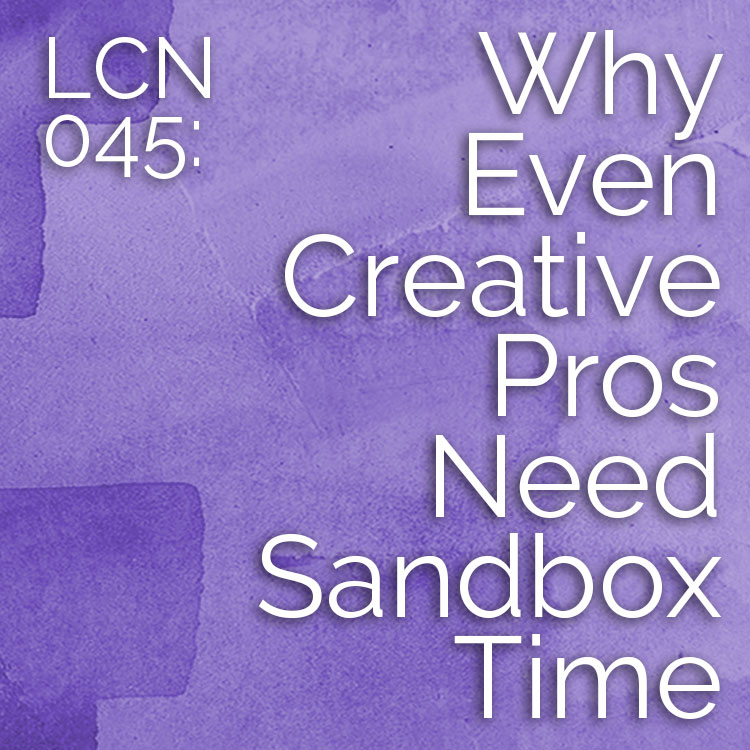
 Someone in my Creative Sandbox community mentioned the other day that she’s working on a professional certification in her field as a creative pro, and it’s eating up a lot of her time. The work is fun, and it’s certainly creative, so does it count as sandbox time as well as homework for her certification? I mean, there are no rules in the Creative Sandbox, right?
Someone in my Creative Sandbox community mentioned the other day that she’s working on a professional certification in her field as a creative pro, and it’s eating up a lot of her time. The work is fun, and it’s certainly creative, so does it count as sandbox time as well as homework for her certification? I mean, there are no rules in the Creative Sandbox, right?
Well, yes and no. There is no wrong — that’s rule number one of my Creative Sandbox Manifesto — but creative practices are not all equal.
See, creative work feeds us differently depending on where the constraints come from.
When you’re completely free of external constraints, and you have nobody to please but yourself, it’s qualitatively different than creating to please someone else, whether that’s a teacher, a client, or an audience.
When I decided, way back in the mid-90s, to turn my creative passion into a business, I thought I’d hit the creative life jackpot. The thing that put food on the table (at least metaphorically), also fed my soul!
That’s every creative person’s dream, right? How lucky was I!
Except that it didn’t quite work that way.
Beware the Professional Trap
Making art on assignment is fundamentally different from sandbox time.
In my case, as an artist who created on commission for private clients, my number one requirement was to please my customer. And even if you don’t take art direction from someone else, even if you have full creative control, whenever an end customer is involved, or whenever you’re required to please a teacher, you just don’t feel as free to muck around and make messes as when you’re intentionally diving into the sandbox.
If you need to please a teacher to get an A or pass a course, you’ve got to do work to their specifications, whether you like it or not. That’s the deal: please the teacher, get the A.
If you’re making something on commission, it’s pretty likely that the person who hired you did so because they liked your previous work, and they want something similar. They’re probably not looking for you to do something wildly new and different, so your job is to stay in familiar, safe territory.
Even if you’re making something not on commission, but to sell to a particular audience, the audience that likes your work likes your previous work, and they want more of the same. If you veer off in a new direction, they may not like it at all.
So in other words, making art in the mindspace of “this is to get me an A,” or “this is to please my client,” or “this is to sell to my existing audience,” by its very nature has a tendency to rein you in.
And if you get reined in enough, pretty soon you’ll come to a complete stop.
This is exactly what happened to me.
I learned the hard way that my creative career was not enough to keep me happy. That alone did not make for a full-color life. In fact, I became this really sad, pathetic creature: a professional artist who never created anything new.
See, the irony is, we need to make messes and explore in order to find our best, richest, most original and authentic creative work. We need to have the freedom to make crap.
And I know nobody likes to make crap, but we need the permission to do so, because remember, it’s the crap that fertilizes the good stuff! (Click to tweet.)
The pressure to make something good is very, very dangerous, because nothing shuts us down faster than having to be great.
When you don’t have permission to make crap, whether it’s coming internally, from yourself, or externally, from a teacher, client, or audience, you tighten up. You play it safe. You repeat what you’ve done before.
This is not true creativity!
I made a painting last year that was just a bunch of scribbly circles. Here’s a snapshot:
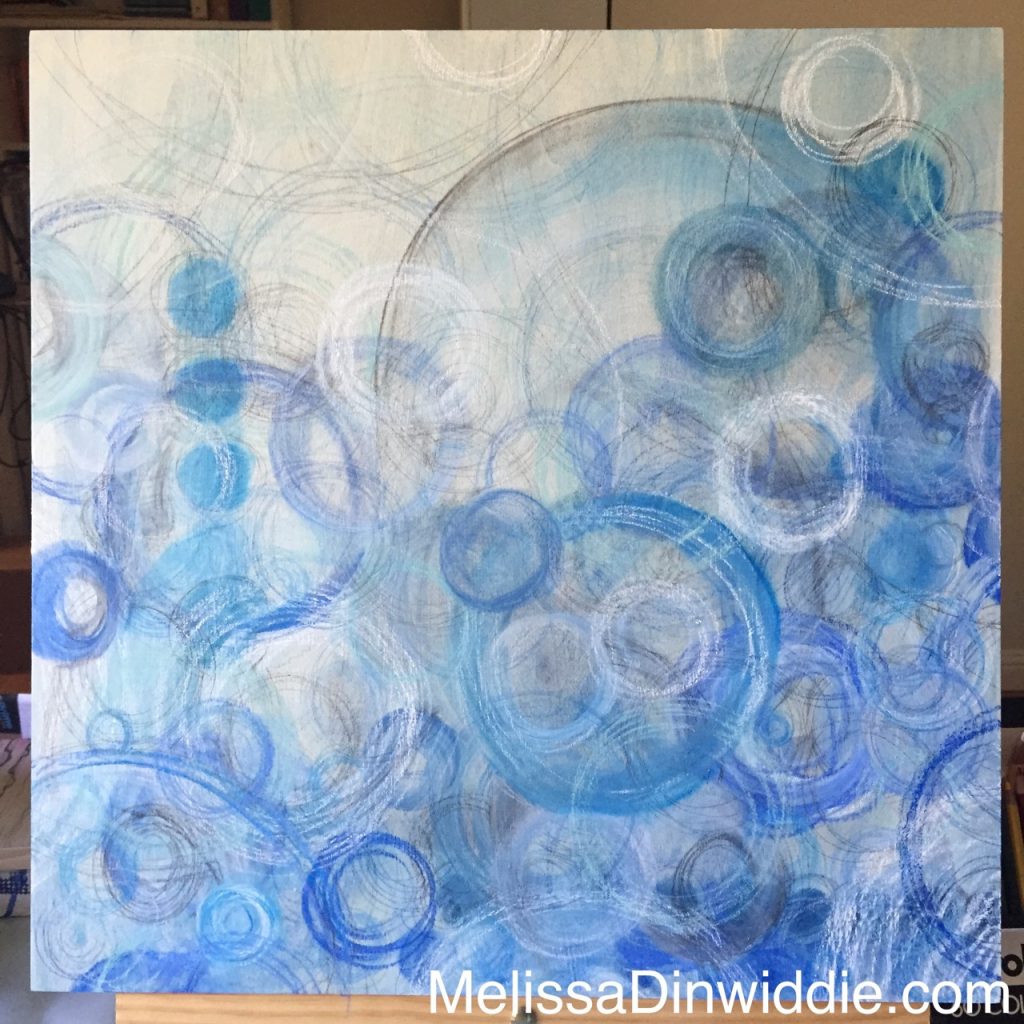
I really liked how this piece came out. So guess what I did? I tried to repeat it.
Not exactly, but I tried to create more paintings in a similar style, but in a different color scheme. I thought it would be great to do a series of paintings like this.
Boy, was that a disaster!
The next painting didn’t work at all, until I let go of this vision I had, and just let myself play. That’s when it stopped being a static, boring exercise, and started getting risky, and a lot more interesting.
True creativity is leaning into uncertainty, going out on a limb, reaching for what you don’t already know. That is what the Creative Sandbox is for — it’s where we go to intentionally make messes and get risky.
That’s why you still need regular, designated Creative Sandbox playtime, even if you’re a creative pro.
In fact, I would argue that if you are a creative pro, you need Creative Sandbox playtime even more than everyone else!
The time we spend creating to please others, to get the A, to earn the commission — it’s creative, it might be really fun, but it’s not as generative as the time we spend in the Creative Sandbox. In fact, even if it feeds me in some powerful ways, when I’m in that place of pleasing others it also sort of sucks up energy.
It’s like living on bread alone. I can enjoy doing it, but if that’s all I do, it will eventually make me sick.
I speak from experience.
Every time I’ve created a new website, every time I’ve developed a new course, every time I’ve written a new article or recorded a new podcast episode, there’s a way in which it feeds me, and many times I’ve gotten so swept up in, and so obsessive about a project, that I let everything else go. It feels like all I need is this one thing.
But after awhile, after a diet of bread alone, no matter how yummy the bread, I start craving other nourishment. And if I don’t get it, things start to break down.
This is why we need dedicated Creative Sandbox playtime.
Creative Sandbox play refuels me. It’s like all the other nutrients my body needs that aren’t in bread.
I don’t know if that metaphor actually works, but I do know that Creative Sandbox playtime is essential.
The Doodle Experiment
I’ve been doodling every morning in bed, for weeks now, and although I confess that I do really hope that every one of my drawings will come out well, that I’ll be super-pleased with it, and feel proud to include it in a coloring book someday, I also intentionally let go of the outcome and let myself just play. Just muck about in the Creative Sandbox.
I allow myself the freedom to create crap.
And sometimes I’m not pleased with how a drawing comes out. Sometimes it is crap. But because I give myself the freedom for each drawing to be whatever it ends up being, my relationship to the work, and my relationship to the creative process is inherently different.
Creative Sandbox playtime is like meditation for me. It’s generative, and re-generative.
Don’t make the mistake that I made when I started my creative business. I thought the business projects were feeding me enough, but I was wrong. If only I had given myself even a few minutes a day of Creative Sandbox time, perhaps I wouldn’t have gotten so burned out on my business!
We all have to refill our creative wells. Julia Cameron, author of The Artist’s Way (affiliate link), swears by the artist date — a 3-hour date with yourself to take in beauty and inspiration — and artist dates are great, but Creative Sandbox play is essential, too. It doesn’t have to be much time — rule number four of my Creative Sandbox Manifesto is “Think tiny and daily” for a reason: even fifteen minutes a day can work wonders.
Go jump in the sandbox today!
Quotes from this Episode
Nobody likes to make crap, but remember, it’s the crap that fertilizes the good stuff! (Click to tweet.)
Creative work feeds us differently depending on where the constraints come from. (Click to tweet.)
If you get reined in enough, pretty soon you’ll come to a complete stop. (Click to tweet.)
Resources from this Episode
The Artist’s Way (affiliate link), by Julia Cameron
Thanks for Listening!
Thanks so much for joining me this week. Have some feedback you’d like to share? Leave a note in the comment section below!
If you enjoyed this episode, please share it using the social media buttons you see at the bottom of the post.
Also, please leave an honest review for Live Creative Now on Tunes! If you’d also like your voice to be heard on the show, leave your question as a voice message right here.
And finally, don’t forget to subscribe to the show on iTunes to get automatic updates.
Subscribe in iTunes | Subscribe via Stitcher
Now go get creating!

PS — Pssst! Know someone who might benefit from seeing this today? Pass it on!

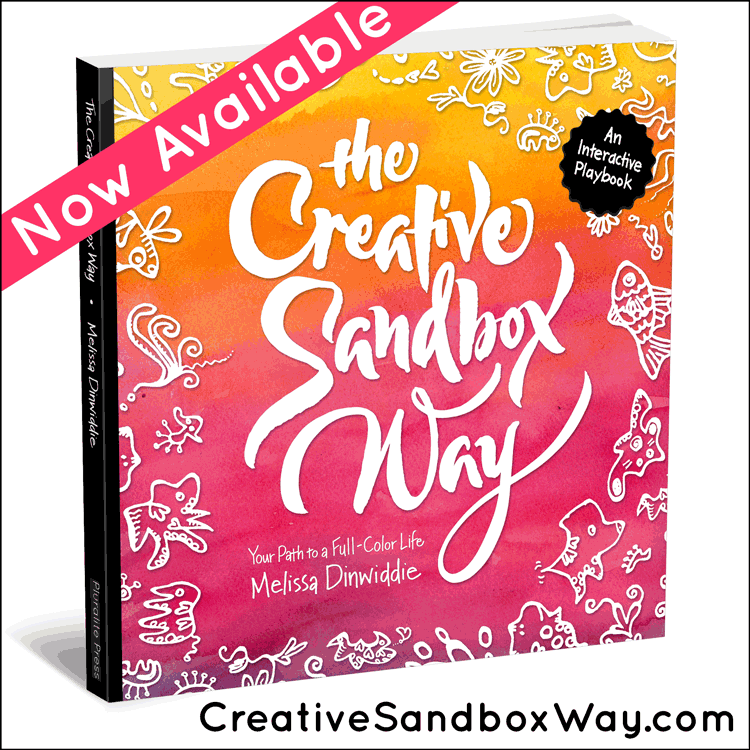
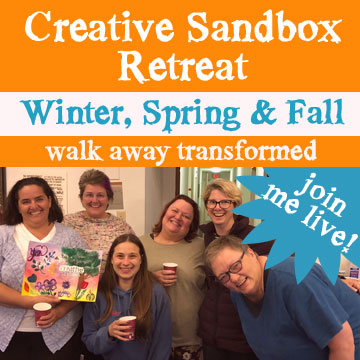
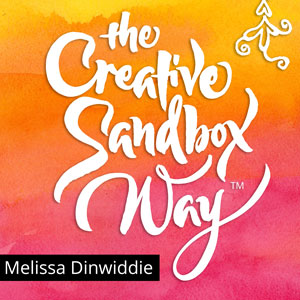

I appreciated Melissa’s pointing out how creating for others, while not replenishing or nurturing our own needs, can “suck our spirit dry. ” Permission to play in the Creative Sandbox? Yes! The metaphor that we need more than bread for nourishment helped me understand the need for MIXING IT UP in my daily creative life. Make a mess. Yes! (I, too, tried to create a duplicate of an original in oil pastel – and the second one easily took 10 times longer than the first!)